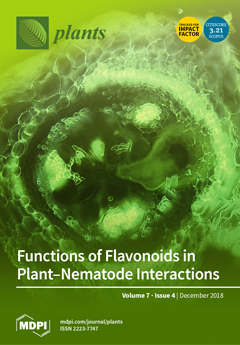Phania matricarioides (Spreng.) Griseb. is a traditionally used plant with various pharmacological properties. However, there are only scarce reports about the phytochemistry and biological activity of this plant. In this work,
P. matricarioides was collected from three different localities of Cuba: PmB (collected
[...] Read more.
Phania matricarioides (Spreng.) Griseb. is a traditionally used plant with various pharmacological properties. However, there are only scarce reports about the phytochemistry and biological activity of this plant. In this work,
P. matricarioides was collected from three different localities of Cuba: PmB (collected in Bauta, Artemisa), PmC (collected in Cangrejeras, Artemisa), and PmI (collected in La Lisa, Havana), extracted with aqueous ethanol, and analyzed macroscopically and microscopically. The extracts were screened for phytochemical contents, analyzed by TLC and HPLC, and screened for antioxidant activity using the FRAP and DPPH assays. Macroscopic analysis showed similar results for all samples; however, microscopic, physicochemical and phytochemical studies showed appreciable differences. In particular, the total solid of PmC extract was higher (1.94 ± 0.03%) than the other samples. In HPLC profiles, quercetin was identified in the three samples and a greater similarity between samples PmB and PmI was observed. All samples demonstrated radical-scavenging antioxidant activity by the DPPH assay, which PmC also demonstrated the smaller (
p < 0.05) value (IC
50 = 27.4 ± 0.1 µg/mL), but was statistically superior (
p < 0.05) to vitamin C (IC
50 = 23.7 ± 0 µg/mL). Also, in the FRAP assay, a higher vitamin C equivalent of PmC was significantly superior (
p < 0.05) to the other extracts at the evaluated concentrations, which is likely due to a higher concentration of quercetin. In conclusion,
P. matricarioides could constitute a potential resource in the field of phytotherapeutic products, and the results obtained can contribute to the development of the quality control norms for this species.
Full article






